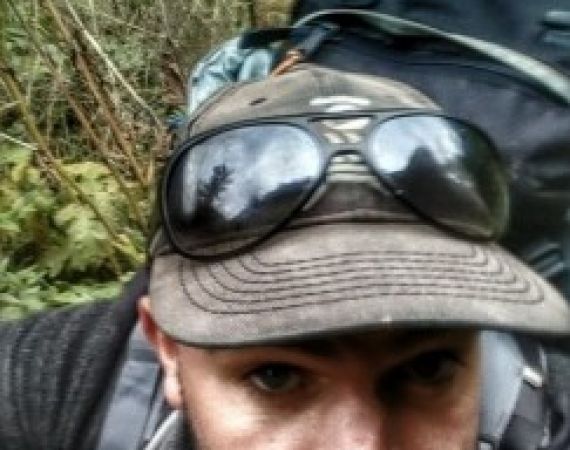Lunchtime talk write-up
Posted on Tue 19 May 2015
Evolving eyes for environmental narratives
New Studio resident Matt Bjerregaard joined us on Friday 15 May to talk about hacking cameras, sharing narratives, diving, conservation science and wingsuiting.

Matt Bjerregaard
Speaker

Matt Bjerregaard
Matthew is a visual artist and conservation scientist whose work focuses on the ways in which humans engage with the environment. He regularly provides specialist cutting edge technology solutions to the broadcast industry in documentary and drama filmmaking while engaging in less conventional…New Studio resident Matt Bjerregaard joined us on Friday 15 May to talk about hacking cameras, sharing narratives, diving, conservation science and wingsuiting. Despite growing up without a TV, Matt was drawn to moving image as a vehicle for storytelling, and bought his first camera from a charity shop at a very young age. He started filming wildlife on a farm and shared these moving narratives with his friends.
In a whistle-stop tour of Matt’s diverse career and broad interests, here are five things I took away from his talk:
1. In the current market, you can spend £250k on a camera with capabilities of recording at a high frame rate, and high image resolution for just 12 seconds. That just won’t cut it when you need to sit on a small boat off The Philippines for 2 months, continuously filming to observe the spectacle of a thresher shark leaping from the water. To solve this problem, Matt ditched the nostalgic vision of what a camera should look like, and what language should surround it (we all talk about shutter speed, but modern cameras have no shutter) in favour of hacking and rebuilding them to create something that enables him to respond effectively to specific scenarios.
2. As a cameraman, diver and conservation scientist, Matt is passionate about the relationship between humans and nature. He spent five years in The Philippines researching Anthropogenic Stress (damage related to human activity) caused to the coral reef driven by a thriving tourist industry. Matt devised a less intrusive, and more accurate way of collecting ecological data by flying cameras over the top of the seabed without making contact, as opposed to laying a chain mechanism over the coral causing damage and failing to collect a significant amount of data. Small labridae fish live on the coral; these fish clean the thresher sharks, which attract the tourists. The tourists provide a livelihood for many local people, and hence the small labroides and other species of mutualistic cleaner fish are a vital part of the local ecosystem and need protecting. Matt uses film as a medium to tell these narratives.
3. When Typhoon Haiyan (known in The Philippians as Typhoon Yolanda) hit The Philippines in November 2013, Matt was asked to return to investigate what constructive help could be offered to the local people. He made a compelling film; sharing the story of the family he lived with while he was there, watch it here.
4. The fragility of human life was highlighted in stark contrast, from those dying in natural disasters, to those taking part in high-risk sports. This fragility and transient nature of human life reinforces the case for storytelling as an integral part of our existence. Matt worked with wingsuit pilots to film their pursuits on go-pros.
5. Micro-narratives’ of storytelling, is the term Matt uses to describe action that occurs within fractions of a second. These micro-narratives are what people really want to watch and share; a shark leaping out of the water, or a wingsuit pilot narrowly missing a jutting cliff face. Hacking emerging camera technology to create the capability needed to capture these rare spatial moments with exceptionally high frame rates, and share them, is at the core of Matt’s practice. Every time someone watches a film of something incredible that is happening in nature, it encourages wider engagement with our environment and raises awareness of the biodiversity on the planet.